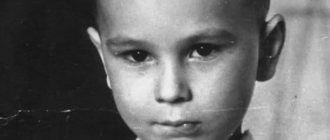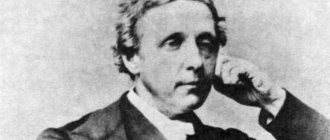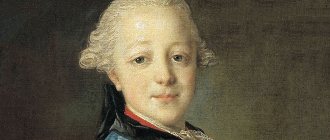Divan Council
6813
The series The Magnificent Century introduces us to Rustem Pasha as a very cunning and resourceful person. He is ambitious, merciless and devoted to his lady Hurrem Sultan. Immensely in love with Suleiman's only daughter, Mihrimah Sultan. Rustem is ready to do anything for the sake of his mistress, his beloved wife and power. He is a skilled intriguer who has become one of the main figures in the political death game against Sehzade Mustafa.
Does the filmed Rustem Pasha bear any resemblance to his real prototype? Let's find out about this together.
Biography
There is no exact data that would indicate to us its origin. Therefore there are several versions. According to the most common of them, the capital of Bosnia, the city of Sarajevo, is considered to be the birthplace of Rustem Pasha. Approximate year of birth: 1500. He was born either into the Opukovich or Chigalich family. And his real name is Boris.
But there are sources according to which Rustem Pasha was a Serb, and possibly a Croat or Albanian.
In archival records for the years 1557-1561, his father is recorded as Abdurrahman or Abdurakhim. This means that he was a slave who converted to Islam. Historians also attribute to him a sister, Nefisa, and two brothers: the Ottoman admiral Sinan Pasha and Mustafa Bey.
When Rustem was still a child, he and his brother Sinan were brought to Istanbul. Both of them ended up in the Enderun palace training center. Boys who were forcibly taken from their families as a tax on the non-Muslim population ended up here. In this institution, young men had to go through seven stages of training in sequential order. They were specially trained for employment in managerial positions. Some went to serve as Janissaries. And those who successfully completed all seven stages became important officials.
Career
In 1526, Rustem received his first position as silathar - the Sultan's squire. And as the Sultan's squire, he took part in the legendary military campaign against Mohacs together with Sultan Suleiman.
After this victorious battle, Rustem began his career advancement: he was entrusted with the Sultan's stable, where Rustem Agha was the chief groom, mirachur.
In 1533, he received a more serious appointment - he was made governor of Tek. Then he became a beylerbey in Diyarbakir, and then, in 1538, Rustem went to serve as a beylerbey in Anatolia.
Rustem climbed the career ladder higher and higher. The year 1539 became significant for him in that he became the third vizier in the council of the diwan. And on November 26, 1539, Sultan Suleiman approved his desire to marry Mikhrimah Sultan. So he received the title Damat, which means son-in-law of the Sultan.
In 1541, Rustem rose another step higher and became the second vizier.
And in 1544, a serious skirmish occurred between Suleiman Pasha and the then Grand Vizier Khusrev Pasha right in front of the Sultan. Things even came to a fight and both pashas were removed from their posts. Rustem Pasha was quickly appointed to the vacant position of Grand Vizier. This was his first appointment to this position. Then he served there for 9 years.
In 1553, after the execution of Mustafa, the rebellious Janissaries demanded that Rustem Pasha be killed, considering him guilty of the death of the Sultan's heir. Hurrem Sultan managed to protect her son-in-law. She begged Suleiman not to believe in gossip and to take pity on him, at least for the sake of their daughter. Suleiman removed Rustem from his post and sent him away to Uskudar until the passions subsided.
In 1555, Rustem Pasha managed to regain the trust of Suleiman and the position of grand vizier. Of course, with the support of my mother-in-law and wife. He brought charges of bribery against the then Grand Vizier Kara Ahmed Pasha. Rustem managed to achieve his execution. And after that he again became the Grand Vizier.
Character from The Magnificent Century
As for his appearance, he immediately captivates the female audience. He is known only as “Mr. Peerless Mustache.” Burak, a tall, stately, brown-eyed brunette, is truly one of the most attractive men on the set of The Magnificent Century.
As for both appearance and character traits, it seems that he does not have a single flaw. Was the real Bali Bey really so brave and loyal? The actor who played him brilliantly was able to convey the personal qualities that the historical prototype himself possessed. He devoted his entire life to serving the Ottoman Empire and, in particular, the Sultan himself. He always put state interests above his own. He is strikingly different from other representatives of the court nobility in his openness, straightforwardness and nobility, so no one can persuade him to participate in palace intrigues. This hero of the series is smart and prudent enough to avoid dangerous situations. I can’t even believe that all these qualities are combined in one person, who was Bali Bey. The actor, however, tried to combine the courage of a warrior, respect and gallantry towards women, and also masculine charm.
Despite the increased attention from the fairer sex, Bali Bey’s personal life is not going well. First he had to endure the death of his first wife Armin, then because of mutual feelings for Aybiga he almost lost his head. Further, the audience hoped that he would reciprocate Mikhrimah’s love, but this did not happen either.
In the end, the ruler of women's hearts leaves Istanbul for his homeland.
Actor biography
Burak Özçivit became simply mega-popular after he played the noble Ottoman commander who was Bali Bey. The actor, whose biography began to arouse interest especially after appearing in this series, was born in Mersin in 1984. His tall stature and impressive appearance played a role in his choice of profession: from the age of 19 to 23, he worked as a model and has won prestigious awards, for example, first place in the national beauty contest in 2003.
At first there was a small role in the film “Minus 18” (2006). Then offers to act began pouring in: in 2007 there was participation in the series “Forced Husband”, in 2008 - “Family Home”, then “Betrayal” (2010) and “Little Secrets” (2010). Thanks to the role of Bali Bey in “The Magnificent Century” (2011-2013), he became recognizable not only in Turkey, but also abroad. He also played Kamran in the third film adaptation of the film “Korolek - the Songbird” (2014).
Burak Ozchivit: personal life
Like his screen hero Bali Bey, the actor is an idol of women's hearts. This prominent handsome man is still a bachelor, but he had a long-term relationship with his colleague on the podium, Ceylan Chapa. Currently, he is dating Fahrie Evgen, who played Feride in “The King,” but there is no talk of marriage yet.
In all situations, the actor of the series “The Magnificent Century” Bali Bey behaved like a real man. This explains the universal love of viewers for this character. In him they saw everything that modern representatives of the stronger sex have so little of.
A stern male gaze and a perfect mustache - Malkochoglu Bali Bey is a powerful warrior, a heartthrob and an incorrigible ladies' man! This is exactly how he was shown to us in the series The Magnificent Century. His role was played by Burak Özçivit. Handsome man, what can I say. But today is not about him, but about Bali Bey himself.
In the series, Malkocoglu was extremely popular among women. Princesses and ordinary girls literally did not give him access. But what was he really like? Was Mihrimah Sultan in love with him? Was he drawn to Aybiga?
Of course, we must understand that the creators of the series were inspired by historical events. However, a lot was made up and embellished for the sake of an interesting storyline. After all, the target audience of the series is mainly women. Therefore, it was impossible to do without love stories and intrigues.
But let's return to the one for whom I started - Malkochoglu Bali Bey.
Offspring [edit | edit code]
The number and names of Rustem Pasha's children are little known, and literary records on this matter are contradictory. It is known for sure that Rustem Pasha had a daughter from Mihrimah Aishe Humashah Hanim Sultan [52]. Her husbands and children were very influential and held important government positions. The same applies to the grandchildren of Ayse Humashah.
The nameless son of Rustem Pasha and Mihrimah Sultan rests in a turban next to his father. He died shortly before his father's death from an epidemic [15]. Two other unmarked graves, located in the Mihrimah Mosque in Üsküdar, are believed to be the graves of the sons Mihrimah and Rustem. There is also the tomb of Osman Bey (1576/77), son of Rustem Pasha by another mother [53] [54] [55].
The only daughter of Rustem Pasha and Mihrimah Sultan was born in 1543 (according to other sources, in 1541) and died in 1594/1595. In the year of her father's death, she married Semiz Ahmed Pasha, who later became the Grand Vizier. And after his death she married Nishanji Feridun Bey [56]. Ayşe Hümashah is buried in the Aziz Mahmud Hüdayi complex [57]. Aishe Humashah, in her marriage to Ahmed Pasha, had two daughters (Saliha Sultan; the name of the second daughter is unknown) and four sons (Osman Bey (d. 1591), Mehmed Bey (d. June 20, 1593), Abdurrahman Bey (d. . after 1597) and Mustafa Pasha (d. June 20, 1593)) [58] [59] [60].
Yusuf Sinan Pasha in 1573 married the eldest of the two daughters of Aisha Humashah Sultan - Saliha Sultan. After the death of his wife in 1576, Yusuf Sinan married his youngest daughter, Aisha Humashah. This marriage produced two sons: Mahmud Pasha (d. 1643) and Husein Bey [52].
The new Turkish historical series “The Magnificent Century” has stirred up a wave of unprecedented interest in the history of the Ottoman Empire (modern Turkey). This was largely due to the excellent work of the decorators, costume designers, actors and cameramen involved in this film. The harem of Sultan Suleiman I appears before the viewer in the image of a Garden of Eden, full of fabulous birds - the Sultan’s concubines. But behind the external beauty and harmony lies the life of a group of women, full of intrigue and danger, fighting for the affection of one man.
Not the least role in the “harem machinations” is played by the Sultan’s vizier, Rustem Pasha. In the series he is played by Turkish actor Ozan Güven. Who was Rustem Pasha? The biography of this prominent statesman is full of events and in itself is worthy of film adaptation.
Rustem Pasha (1500–1561) is a Croat by nationality, but as a child he and his brother came to Istanbul. There is a version that he was a slave, but then it remains a mystery how he managed to get an education at a madrasah (Muslim secondary and higher school) at the palace. And he got it.
Then graduate Rustem Pasha went to war. His biography was replenished with a series of career ups in this field. As a result, he went from a squire to the head of the Sultan's stable, and then became the groom of Suleiman I himself (an extremely honorable position).
Delicious recipe! Tulips planting and care in spring
Upon returning to peaceful life, Rustem Pasha, whose biography can serve as an excellent example of the “Turkish dream,” became a governor, then the Third Vizier of Suleiman I and a member of the Divan (“government” under the Sultan).
In 1539, Rustem married the only daughter of the Sultan and his wife Hurrem Sultan - Mirimah Sultan. And after another 5 years he took the position of Grand Vizier, that is, the chief adviser to Sultan Suleiman. Not bad for a man from nowhere, right?
And the child understands that he needs to have outstanding qualities in order to achieve such a rise. Contemporaries note that Rustem Pasha (the biography of the Grand Vizier is marked by references to this) was smart, insightful, restrained and recklessly devoted to his ruler.
Of course, such a track record could not go unnoticed by enemies. Unrest was raised over the unfounded accusation, and the Sultan removed Rustem Pasha from the post of Grand Vizier for two years. After everything had calmed down, the latter took the same place again. Suleiman I highly valued the financial and diplomatic abilities of his son-in-law and always relied on his opinion in resolving relevant issues.
This outstanding statesman lived to the age of 61, after which he died of dropsy in prosperity and respect. This is the real life story of a man named Rustem Pasha. His biography and photo (more precisely, of the actor who embodied the historical image on the screen) are contained in our article.
In the series, Rustem Pasha is presented as a henchman of Hurrem Sultan (the Sultan’s wife) and the executor of her evil will. He took part in a conspiracy against Mustafa, as a result of which the latter was executed. After Rustem himself turned out to be “waste material,” he was also executed right in the palace.
This is how the life path of the Grand Vizier and Rustem Pasha himself appear before the audience (biography). The actor who played this role, Ozav Güven, is well known in Turkey for his work in TV series and films.
He was born in West Berlin in 1975, then studied at the National Conservatory at the University of Istanbul, in the department of modern dance. He was married to Turkish actress Turkan Deraya, but in 2010 their marriage broke up.
Ozav Güven has starred in several TV series and films. For his role in the film “Balalaika”, released in 2000, he received recognition from critics and viewers. But the actor’s role as Rustem Pasha in the TV series “The Magnificent Century” brought him worldwide success.
The series The Magnificent Century introduces us to Rustem Pasha as a very cunning and resourceful person. He is ambitious, merciless and devoted to his lady Hurrem Sultan. Immensely in love with Suleiman's only daughter, Mihrimah Sultan. Rustem is ready to do anything for the sake of his mistress, his beloved wife and power. He is a skilled intriguer who has become one of the main figures in the political death game against Sehzade Mustafa.
Does the filmed Rustem Pasha bear any resemblance to his real prototype? Let's find out about this together.
Biography
There is no exact data that would indicate to us its origin. Therefore there are several versions. According to the most common of them, the capital of Bosnia, the city of Sarajevo, is considered to be the birthplace of Rustem Pasha. Approximate year of birth: 1500. He was born either into the Opukovich or Chigalich family. And his real name is Boris.
But there are sources according to which Rustem Pasha was a Serb, and possibly a Croat or Albanian.
In archival records for the years 1557-1561, his father is recorded as Abdurrahman or Abdurakhim. This means that he was a slave who converted to Islam. Historians also attribute to him a sister, Nefisa, and two brothers: the Ottoman admiral Sinan Pasha and Mustafa Bey.
When Rustem was still a child, he and his brother Sinan were brought to Istanbul. Both of them ended up in the Enderun palace training center. Boys who were forcibly taken from their families as a tax on the non-Muslim population ended up here. In this institution, young men had to go through seven stages of training in sequential order. They were specially trained for employment in managerial positions. Some went to serve as Janissaries. And those who successfully completed all seven stages became important officials.
Career
In 1526, Rustem received his first position as silathar - the Sultan's squire. And as the Sultan's squire, he took part in the legendary military campaign against Mohacs together with Sultan Suleiman.
After this victorious battle, Rustem began his career advancement: he was entrusted with the Sultan's stable, where Rustem Agha was the chief groom, mirachur.
In 1533, he received a more serious appointment - he was made governor of Tek. Then he became a beylerbey in Diyarbakir, and then, in 1538, Rustem went to serve as a beylerbey in Anatolia.
Rustem climbed the career ladder higher and higher. The year 1539 became significant for him in that he became the third vizier in the council of the diwan. And on November 26, 1539, Sultan Suleiman approved his desire to marry Mikhrimah Sultan. So he received the title Damat, which means son-in-law of the Sultan.
In 1541, Rustem rose another step higher and became the second vizier.
And in 1544, a serious skirmish occurred between Suleiman Pasha and the then Grand Vizier Khusrev Pasha right in front of the Sultan. Things even came to a fight and both pashas were removed from their posts. Rustem Pasha was quickly appointed to the vacant position of Grand Vizier. This was his first appointment to this position. Then he served there for 9 years.
In 1553, after the execution of Mustafa, the rebellious Janissaries demanded that Rustem Pasha be killed, considering him guilty of the death of the Sultan's heir. Hurrem Sultan managed to protect her son-in-law. She begged Suleiman not to believe in gossip and to take pity on him, at least for the sake of their daughter. Suleiman removed Rustem from his post and sent him away to Uskudar until the passions subsided.
In 1555, Rustem Pasha managed to regain the trust of Suleiman and the position of grand vizier. Of course, with the support of my mother-in-law and wife. He brought charges of bribery against the then Grand Vizier Kara Ahmed Pasha. Rustem managed to achieve his execution. And after that he again became the Grand Vizier.
Biography of Malkocoglu Bali Bey
Bali Bey was born in 1495.
Yahyapashazade Malkochoglu Bali Bey or Koca Bali Pasha - Bali Bey was known by these names. Although, Yahyapashazade is a nickname that people awarded him and his brothers, which meant “son of Yahya Pasha.”
His father was Malkocoglu Damat Yahya Pasha. Damat - because he (his father) was married to Huma Sultan - the daughter of Sultan Bayezid II, who bore him three sons. And the title Damat was given to those who became the husband of the Sultan’s daughter or sister. The mere fact that the Sultan decided to become related to Malkochoglu speaks of high trust in them.
It can be safely said that Malkocioglu Bali Bey was Sultan Suleiman's cousin, since his mother and Suleiman's father were brother and sister, and Sultan Bayezid II was the grandfather of both Suleiman and Bali Bey.
The boys who belonged to the Malkochoglu family literally “grew up in the saddle.” From childhood they were taught horse riding and taught to hold a sword in their hands.
Bali Bey, being the successor of this family, already at the age of seven could ride a horse well and skillfully wield a sword. Having received a proper education, the young warrior, following in the footsteps of his ancestors, began to serve the Ottoman dynasty.
Charity
According to documents, Rustem Pasha used his wealth in charity. He created many foundations and launched projects that provided funding for these foundations both during his lifetime and after his death. Not a single grand vizier managed to achieve such magnitude in charity.
Rustem Pasha Mosque
In order to provide primary schools, hospitals, madrassas, tekkes, caravanserais, public fountains, maintain hard roads and free bridges, Rustem Pasha used the income he received from villages, agriculture, workshops, bakeries, mills, shops, commercial baths etc. These funds of his were mainly located in large cities or on important trade routes, where these goods and services were in demand. This successful placement ensured the growth of the manufacturing economy and increased trade.
Silk production and sale took place under his personal leadership. They opened silk factories in Bursa, silk manufactories in Istanbul, and silk trade continued. And in 1551, Rustem Pasha in Sarajevo transformed the covered bazaar into a center where silks were traded.
Rustem Pasha Mosque
So that these projects of his could continue to work, Rustem bequeathed them to his beloved wife Mihrimah and their daughter Aisha Humashah Sultan.
His most popular charitable project is the Rustem Pasha Mosque. He did not have time to complete it during his lifetime, so its construction after Rustem’s death was carried out by the widowed Mikhrimah Sultan. In memory of her husband, she ordered the walls of the mosque to be decorated with exquisite and finest tiles, reminiscent of silk, which Rustem loved so much.
Carier start
The career growth of Malkocoglu Bali Bey begins with his service as sanjakbey in Samendir. And a little later, in 1521, he, along with the Ottoman army, fights for Belgrade. And when they manage to capture it, Bali Bey is appointed governor of Belgrade and Bosna.
After the conquest of Belgrade, he has the honor of fighting at Mohács, this battle took place in 1526. There, Suleiman notices the warrior and entrusts him with coordinating the construction of a bridge over the Danube. The same one we saw in the series. The Battle of Mohács became the impetus for his career. The young military leader received command of the right wing of the Turkish army and the post of second beylerbey in Budapest.
Personal life
Little is known about Malkocoglu's personal life. But one thing can be said for sure: the series lied a lot about his adventures with various beauties. And he couldn’t have anything with Mikhrimah.
When Suleiman's daughter became an adult and got married, Bali Bey had already been married for a long time. And he got married in 1522 - Mikhrimah was just born that year.
In the series, we were shown that he was single before Mikhrimah’s marriage. And many on TV were indignant that young Mikhrimah was given in marriage to 39-year-old Rustem, when Mikhrimah herself was burning with passion for the handsome and young Bali Bey. Everyone thought that he was more suitable for her age. But in life, Rustem was 5 years younger than Bali Bey, although you can’t tell from the series. And Bali Bey and Suleiman were the same age.
As you already understand, he also had nothing with Aibige-Khatun.
In reality, 27-year-old Bali Bey married Davletshakh Khatun, his cousin. She was then 14-15 years old. The most interesting thing is that his mother Huma Sultan and his mother-in-law Ainisha Sultan were cousins. Their mothers were different, but their father was the same - Sultan Bayezid II. He did not receive the title “Damat” because Bali Bey married not the daughter, but the granddaughter of the Sultan.
The series again kept silent about the fact that he had children. At least three: two sons and one daughter. But only one son is known for certain, whose name was Mehmed Bey.
Mehmed Bey turned out to be a worthy son of his father. He grew up to be a great warrior. He became a hero in the Yemeni and Cypriot military campaigns. Like Bali Bey, he carried out faithful service to Suleiman and accompanied him on his last campaign. The day before the victory in it, Sultan Suleiman died.
Religious views
Interior of the Rustem Pasha Mosque
Rustem Pasha was a staunch Sunni of the Hanafi madhhab. He took his religious duties very seriously: he never missed the prescribed prayers, and in addition he loved to listen to the reading of the Koran. He followed all the religious principles that Sultan Suleiman adhered to and that Ebusuud Effendi recommended. They are reflected in the inscriptions collected for the Rustem Pasha Mosque, presumably by Sheikh Hakim Chelebi. The faith of Rustem Pasha is reflected in numerous religious foundations. They provided an opportunity to support the population, who in turn offered prayers for the Sultan. He coordinated the work of the funds with the Sultan himself, his wife and her mother[49]. Numerous copies of the Koran were found on the estates of Rustem Pasha, confirming his religiosity and activities to spread Islam[43]. Despite Rustem Pasha's intolerance towards people of other faiths, Ambassador Navagero communicated with Rustem more than any of his predecessors. Rustem Pasha, like the ambassador himself, did not trust the non-Christian, but under him the “rating” of Christians rose as never before[18].
Charity
The foundation charters of 1544, 1557, 1560 and 1561, as well as the posthumous one of 1570, indicate that Rustem Pasha used his enormous wealth for charitable purposes. Numerous charitable foundations and related entities were created and served to provide funding for the projects of these foundations during his lifetime and after his death. No great vizier before him could achieve such a scale. These foundations were almost always located either in the two main cities of Istanbul and Edirne, or along important trade routes between Esztergom in the north and Medina in the south, and between Skopje in the west and Van in the east. Thus, they were also an important factor in enhancing the manufacturing economy and trade[50]. In particular, the Grand Vizier personally took care of silk production and the silk trade: he contributed to the opening of silk factories in Bursa, a silk manufactory in Istanbul, and also transformed the covered bazaar in Sarajevo into a center of silk trade in 1551[18].
The most famous charitable project is the Rustem Pasha Mosque in Istanbul. It was completed posthumously on the initiative of Rustem Pasha by the architect Sinan. The construction and later management of the project was carried out by the widow of Rustema Mikhrimakh[51]. Other major construction projects were the Friday mosque in Rodosto and the caravanserai











